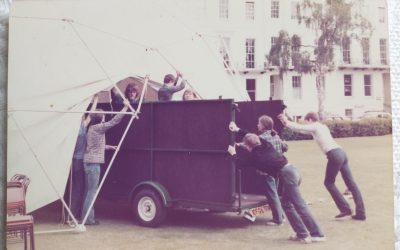I was fascinated to read recently about an experiment to find out what goes on in the brain of actors when they pretend to be other people. Actress Fiona Shaw volunteered to recapitulate her celebrated performance of TS Eliot’s ‘The Waste Land’ while lying motionless inside an MRI chamber at London University’s psychology department. She had explained that in her solo performances of this poem, she strongly visualises certain scenes and imagines herself physically moving through the scenes in relevant ways. The researchers wanted to examine whether, when she was imagining such scenes, her brain patterns were different from the patterns produced by ordinary activity such as counting numbers.
Amazingly, the MRI scan showed that when she imagined the scenes of the poem, her brain showed activity in the areas which control movement, or the areas associated with analysing or doing a complex transformation of a visual image – even though she was not moving at all, or seeing anything but the dark walls of the MRI chamber. Her brain was, in fact, working intensely as she imagined the lives of others. Radio 4’s Today programme, reporting the experiment, concluded that ‘pretending to be other people is not nearly as easy as the best actors make it look.’
Some while ago I read that when musicians imagine and ‘hear’ music in their heads, the scans of their brain activity are almost indistinguishable from those of people who are actually hearing music. It certainly feels that way when you’re ‘hearing music’ in your head. What actually is the difference, I wonder, between the brain patterns produced by imagining music and the patterns produced by hearing real music?




i have come to the concl;usion that concert pianists have different brainwaves and memory capacity for music than ordinary people,they are lucky individuals and it has not much to do with finger ability
You may be right, Dan, but don’t underestimate the amount of work that such individuals have to do to learn and memorise things, nevertheless!